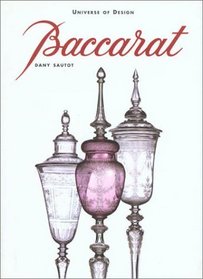Search -
Baccarat (Universe of Design)
Baccarat - Universe of Design
Author:
Since the early nineteenth century, the mention of luxury glass immediately has brought to mind the legendary French House of Baccarat. Where Steuben and Tiffany are quintessentially American, and Waterford is renowned for its rigorous attachment to cut crystal, Baccarat signifies a variety of things to many different people. For the wine connoi... more »
Author:
Since the early nineteenth century, the mention of luxury glass immediately has brought to mind the legendary French House of Baccarat. Where Steuben and Tiffany are quintessentially American, and Waterford is renowned for its rigorous attachment to cut crystal, Baccarat signifies a variety of things to many different people. For the wine connoi... more »
ISBN-13: 9780789302007
ISBN-10: 0789302004
Publication Date: 5/15/1998
Pages: 80
Rating: ?
ISBN-10: 0789302004
Publication Date: 5/15/1998
Pages: 80
Rating: ?
0 stars, based on 0 rating
Genres:
- Arts & Photography >> Graphic Design >> Design >> General
- History >> Europe >> France >> General
- Crafts, Hobbies & Home >> Antiques & Collectibles >> Glass & Glassware
- Crafts, Hobbies & Home >> Crafts & Hobbies >> Glass & Glassware
- Humor & Entertainment >> Puzzles & Games >> Gambling >> Baccarat




